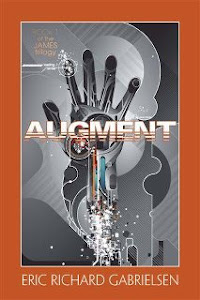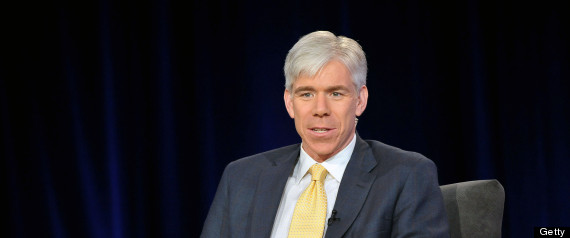Coming to Kindle and Smashwords

November 2013
Dec 31, 2012
Dec 28, 2012
but Wayne LaPierre said police station are never attacked....
Gloucester Township Shooting: 3 Police Officers Hurt In Shooting At NJ Police Station
The shooting occurred at the Gloucester Township police station in Camden County.
Police say gunfire erupted inside the police station at about 5:45 a.m. Friday as a man was being processed on a domestic violence complaint.
The man grabbed a gun and began firing. Three officers were hit before the suspect was shot and killed.
Deputy Police Chief David Harkin says one officer suffered a gunshot wound to the abdomen and was undergoing surgery. Two other officers suffered minor injuries
the people's party
GOP Governors Deny The Poor Health Care In Opposing Obamacare's Medicaid Expansion

Texas Gov. Rick Perry, right, and Louisiana Gov. Bobby
Jindal in De Witt, Iowa, Tuesday, Dec. 20, 2011. Both Republican
governors -- along with those in Oklahoma, Alabama, Mississippi,
Georgia, South Carolina, South Dakota and Maine -- have rejected an
expansion of Medicaid in their states. (AP Photo/Chris Carlson)
Over decades, she made her living assisting elderly people in nursing homes in jobs that paid just above minimum wage and included no health benefits. So even as her feet swelled to such an extent that she could no longer stuff them into her shoes, and even as nausea, headaches and dizziness plagued her, she reached for the aspirin bottle or made do with a teaspoon of vinegar. She propped her feet up on pillows and hoped for relief.
"Before I got sick," she said, "I hadn't been to the doctor in 20 years."
After she collapsed last year and landed in in a local emergency room, doctors diagnosed her with congestive heart failure, high blood pressure and hypothyroid. They ordered her not to work. She arranged a Social Security disability benefit, and she enrolled in Medicaid, the government-furnished insurance program for the poor. She used her Medicaid card to secure needed prescription medications. Her ailments stabilized.
But this year, the state determined that the $819 a month she draws in disability payments exceed the allowable limit. By the federal government's reckoning, her $9,800 annual income made her officially poor. But under the standards set by Louisiana, she was too well off to receive Medicaid.
This is how Johnson, 57, finds herself back amid the roughly 49 million Americans who lack health insurance. This is why she must again reach into her pocket to secure her prescription drugs, a supply that runs about $200 a month. That sum is beyond her, so she has gone more than four months without taking her pills on a regular basis. Once again, her feet are swelling and her chest is filling with fluid. Once again, she is confronted with the realization that a lifetime of labor does not entitle her to see a doctor any more than it enables her to gain crucial medications.
"It just doesn't seem right to me," she said. "It just doesn't seem fair."
Were the Obamacare expansion enacted today, some 17 million people would gain the right to coverage under Medicaid or the Children's Health Insurance program, according to the Congressional Budget Office. Laura Johnson would be among them. But the policy does not take effect until 2014. And in several states, including Louisiana, it increasingly appears the policy may not take effect at all.
This is in large part because of a landmark Supreme Court decision earlier this year. The court affirmed Obamacare’s key mechanism -- the authority of the federal government to mandate that people buy some form of health insurance or pay penalties -- but the justices overturned another crucial provision: They decreed that states have the right to opt out of the Medicaid expansion, a step that would deprive people like Johnson of care.
Though Medicaid is jointly run and financed by the states and the federal government, Washington is obligated to cover the full costs of expanding the Medicaid rolls over the first three years. Even as the federal share gradually declines over subsequent years, by 2022 Washington would still be on the hook for 90 percent of the additional costs. But the court said states could turn down that federal money and continue to run their Medicaid programs as they do now, setting their own standards for eligibility.
Since that ruling, Republican governors in nine states -- Texas, Oklahoma, Alabama, Mississippi, Georgia, South Carolina, South Dakota, Maine and Louisiana -- have indicated that this is what they intend to do.
Here in Louisiana, Gov. Bobby Jindal, who now chairs the Republican Governors Association, has criticized the Medicaid expansion as a threat to taxpayers and an incursion on his state's right to set its own policies.
"That's crazy," said Johnson. "I don't understand why he's doing that. He's not thinking about poor people like us."
Jindal declined requests for comment. But in public statements, he has portrayed his opposition as a principled stand in favor of fiscal prudence. Yes, he says, the costs are to be borne by Washington initially, but the the states have to pick up a share.
"This is not free health care," Jindal said last summer during a conference call with reporters, adding that the Medicaid expansion would cost Louisiana $3.7 billion over the first decade.
Obamacare proponents dispute such accounting as both flawed and incomplete.
Expanding Medicaid nationally under Obamacare would increase total state costs by just 2.9 percent, or $76 billion in total between 2013 and 2022, according to research conducted by The Urban Institute and published by the Henry J. Kaiser Family Foundation. The federal government would cover the rest of the roughly $1.03 trillion cost of expanding Medicaid during those years, according to the report. Some new state Medicaid spending would be offset by cutting existing state health programs for the poor.
In Louisiana, participating in the Medicaid expansion would cost the state an additional $1.8 billion over that timeframe, while the federal government would deliver $16.7 billion, the Urban Institute projects. Some 400,000 now-ineligible Louisiana residents would be able to enroll in Medicaid.
As some experts portray it, the benefits of adding uninsured people to Medicaid rolls spill over beyond the recipients. Even people who already have insurance effectively profit through reduced economic waste and by improving the overall health care system.
Uninsured people are more likely to be sick, are more likely to declare bankruptcy, are less productive at work and don't live as long, said John Lumpkin, the director of the health care group at the Robert Wood Johnson Foundation, a Princeton, N.J.-based research organization. These impacts effectively cost the economy as much $200 billion every year, he said, citing a 2008 study by the Henry J. Kaiser Family Foundation.
People who lack health insurance run the risk of winding up like Johnson: putting off care as their conditions worsen to the point that they can no longer work, removing their payroll and income taxes from government coffers while drawing on taxpayers for disability benefits. People in that situation effectively increase the costs of health care for everyone, say experts, because they eventually require emergency services, with the bill often picked up by state and federal taxpayers.
In 2010, hospitals nationwide delivered $39.3 billion in health care services for which they received no payment, according to the American Hospital Association, citing the last year for which data is available. Some of these costs are covered by taxpayer-funded programs that reimburse hospitals that have especially high rates of unpaid bills. The rest gets absorbed by the health care system, yeilding higher prices for patients.
The result: an American medical system characterized by extreme inefficiency.
"We have a health care system that has the best medical science in the world that delivers third-world health care to the vast majority of our population," Lumpkin said. "Our nation spends more per capita for health care, by far, than any of the other developed countries in the world. And when you compare outcomes based on any measurement of health or health care, we underperform."
Laura Johnson's son, Dustin, a 20-year-old college student, suffers from severe asthma and himself lacks health care, frequently landing in the emergency room. He offers his own sense of the accounting at work: In his view, people like him and his mother have simply been pushed beyond the ledgers of American life.
"Some of the people who can afford health insurance just kind of forget about people who can't," he said. "I don't think health care is something anyone should be denied. It's not anyone's choice to get sick."
OUT OF THE WOODWORK
Dianne Laird, 57, has experienced both sides of that divide.
Four years ago, as the American economy sank into the worst downturn since the Great Depression, she lost her job as an office manager in Texas. She lost her $42,000 annual salary along with her health coverage. At about the same time, her husband, Ron, 58, shuttered his kayak rental company in the face of declining business.
The Lairds found themselves part of a crowded group that no one chooses to join: people who lack health insurance.
In Texas, that group is especially large, numbering about 6.1 million. As of last year, Texas had the highest rate of residents who were uninsured -- 24 percent compared to 16 percent nationally, according to census data compiled by the Henry J. Kaiser Family Foundation.
Texas also claims distinction as a state with one of the more restrictive standards for Medicaid eligibility: It does not offer Medicaid to adults, regardless of their income, except some pregnant women, poor parents with children at home, and people with disabilities. A single parent, for instance, cannot enroll in Medicaid in Texas if they make more than 25 percent of the federal poverty line -- now, about $2,800 annually.
For a time, the Lairds scraped by on her unemployment benefits while she enrolled in community college, aiming to become a fitness instructor. They made a few dollars on the side selling peaches at a roadside stand and occasional housesitting. They sold their home to raise funds to pay their bills and they moved into a rental apartment.
About a year ago, Dianne got a part-time job teaching exercise classes at the YMCA, a job that pays less than she previously received in unemployment benefits. As a family, the Lairds are poor by the federal standard. But because they don't have children at home and have no disabilities, it doesn't matter how poor they are in Texas, so they have no health coverage.
"If something happens," Dianne Laird said, "then I'm going to have to deal with it."
That mindset has become something of a family trait. Elise, 22, the youngest of the Laird's three children, is a full-time student at nearby Texas State University, where she studies photography and mass communications. She lives on her own with her boyfriend and works part-time at an ice cream shop, sometimes bringing in extra money through photography and modeling jobs.
All told, Elise subsists on about $1,000 a month, supplemented by student loans. She is seeking to apply for food stamps.
"Everyone I know is at poverty," Elise said. "I don't know anyone that doesn't have two jobs, that isn't going to school, who isn't trying to better their lives."
Elise has had no health coverage since she turned 19, which made her too old for the Children's Health Insurance Program, a federal-state benefit similar to Medicaid. So far, she's avoided serious illness, but she feels a gnawing sense of vulnerability, combined with the knowledge that any health problem would be a financial calamity.
"It would be such an ineffable amount of money that it would just be like, 'Well, I can't pay you,'" she said.
Elise and her mother have come to rely on Lone Star Circle of Care, a network of community health centers in central Texas that provides basic medical care and charges on a sliding scale based on income. Elise and her mother visit the network's clinics for annual gynecologic exams, they said.
Given the clinic's mission as a provider to low-income people who lack other options, getting an appointment there sometimes takes a week, they say. The clinic is limited in the services it provides, so Dianne has yet to have a colonoscopy while skipping other basic services.
"I have ailments that I would like to get looked at," said Dianne. "I mean, my hip just kills me all the time."
In the spring, when Dianne broke her ankle, the clinic could not help, so she went to the emergency room at a local hospital, University Medical Center Brackenridge.
"There are no regular doctors that'll see you without you having to shell out cash," she said.
That visit resulted in a $2,500 bill. She has no inkling how she will pay it.
"I'm a month behind on my cell phone bill," Dianne said. "I have to pick and choose what is worthwhile paying right now, and so I choose the car payment, the roof over our head, the electricity, the water," she said.
The Medicaid expansion would relieve families like the Lairds from having to choose between basic health care services and electricity. But Gov. Rick Perry has staked out a strident position against the expansion, objecting to what he portrays as the worst dimension of Obamacare -- greater federal involvement in his state.
"Medicaid is a system of inflexible mandates, one-size fits-all requirements and wasteful, bureaucratic inefficiencies," Perry wrote Health and Human Services Secretary Kathleen Sebelius earlier this year. The health care law's "unsound encroachments will find no foothold here," he declared.
Perry has also described the Medicaid expansion as a fiscal threat, questioning whether Washington can be relied upon to deliver its promised funding going forward.
Experts say such opposition masks the real cause of concern in states such as Texas and Louisiana: They fear what has become known as "the woodwork effect," with the Medicaid expansion serving to publicize the existence of the program, prompting a surge of people to enroll.
That surge would include not only people made eligible by Obamacare, but also people who have been eligible all along but perhaps had not known how to apply. Nationally, just 62 percent of people eligible for Medicaid are actually getting benefits, according to an estimate published in the New England Journal of Medicine in 2010.
While the federal government is obligated to cover the full costs of newly eligible people added to the Medicaid rolls, people who are already eligible would be governed by the existing split: The states on average absorb 43 percent of those costs.
"The state's complaint is, 'We said we would cover these people and now we're going to have to actually cover them and pay for them,'" said Stan Dorn, a senior fellow at the Urban Institute.
Marci Roe worries about the consequences of not paying for them. As executive director of the Volunteer Health Clinic in Austin, she witnesses every day the full dimension of the costs borne by people who live without health insurance.
"They lead sicker lives," she said. "It affects their ability to work, their ability to go to school, to basically support themselves."
WHY DID YOU WAIT SO LONG?
Laura Johnson's working life traces the arc of an American economy that has for decades replaced jobs that paid middle-class wages and provided health insurance with low-wage service sector positions that lack benefits.
Johnson was raised in the town of Homer, La., about 35 miles southeast of here. Her father worked as a machine operator at a plywood company. He came home with dirt under his fingernails and aching joints, but also a paycheck large enough to allow his wife to stay home and look after their seven children. His earnings included health coverage and a retirement savings program.
After high school, Johnson enrolled at Grambling State University, a historically African-American university, where she studied to be a teacher. In her junior year, her father died, felled by heart trouble at 45. Devastated, she fell into depression.
"I loved my daddy more than life itself," she said, recalling how she would ride around in his truck while he made his rounds. "I couldn't eat. I couldn't sleep. My dad was my world."
She dropped out of school and moved to Washington, D.C., where she moved in with an aunt who thought a change of scenery might help her transcend her grief. There, she worked in a department store.
But after a year, Johnson's mother persuaded her to return to Louisiana in the hopes that she would resume her studies. She came home but could not find the motivation to return to classes. Instead, she took a job as a dietician at a nursing home, planning the meals, earning about $1,000 a month, she says.
"I just didn’t want to go back to school," she said. "It was the beginning of a downward spiral. I feel like I should have gone back to college and my life would be better."
Over the subsequent decades, Johnson attended to elderly people in nursing homes and in private residences, delivering meals and medication, emptying bedpans and changing seats.
Most of those jobs paid minimum wage. None included health insurance.
"It didn't bother me," she said, "because I never was sick."
But as the years passed, the minor ailments to which a person can grow accustomed burgeoned into life-threatening conditions. Her feet and ankles swelled, and so did her face, in what her doctors would later conclude was a likely manifestation of thyroid problems. Her left side felt increasingly heavy.
Even as pain and worry became constant, she did not consult a doctor for two simple reasons: She didn't have health insurance, and she didn't have money.
At her last job before she collapsed, she was bringing home about $400 every other week, she says. The rent on her brick-faced apartment on the edges of town ran $575 a week. Her utilities absorbed another $300 a month.
"I just lived paycheck to paycheck," she said. "How you going to go to the doctor with no money?"
In her town in northern Louisiana, Johnson did not lack for company. Nurtured more than a century ago by cotton farming, Ruston is home today to some 22,000 people -- more than a third of them living at or below poverty, according to census data. Its compact downtown is dotted by markers of inadequate finance, from the payday lenders and pawn shops that dominate the strip malls, to discount grocery outlets and fast-food joints.
When the pain got so bad that she could not handle it, Johnson lay on her couch and watched television (mostly soap operas) and consulted a book on home remedies. That's where she learned about vinegar treatments. ("It brings your blood pressure down," she says.) That's where she read that dabbing rubbing alcohol on her temples might limit her headaches, while a little lemon juice could be used for dizziness. For kidney troubles, she says, baking powder and water are thought to do the trick.
On a muggy morning in May 2011, she felt so faint that she could not get herself to work, the pressure in her chest having become unbearable.
"It felt like something was smothering my heart," she said. "I was terrified. It was very traumatic."
Her sister drove her to the emergency room at the E.A. Conway Medical Center, a half-hour drive to the east in the town of Monroe. The hospital -- part of the Louisiana State University health care system, which specializes in care for low-income people -- occupies a five-story brick building next to a juvenile prison ringed by razor wire. Nearly half of the patients at the medical center are enrolled in Medicaid, and 38 percent have no insurance, according to a hospital spokeswoman.
System-wide, the LSU hospital chain derived nearly half of its 2011 revenues from state and federal funds that reimburse facilities that treat large numbers of people who fail to pay their bills, according to its latest annual report. At E.A. Conway, nearly two-thirds of the revenues came from these sources, according to the report.
The medical staff put Johnson on a ventilator and ran a battery of tests.
The doctors found a substantial quantity of fluid around her heart, which was severely enlarged, she says. They determined that her blood pressure was so high that she was at severe risk of a stroke.
"The doctor asked me, 'Why did you wait so long to come in?'" Johnson recalled. "He told me my body was almost getting ready to shut down. And I'm thinking in my head, 'I didn't come because I don't have any insurance.'"
She spent eight days in the hospital, she says, and she never received a bill. It was clear enough that she could not pay.
A hospital spokeswoman declined to discuss the cost of Johnson's care, citing patient confidentiality restrictions, but estimated that the typical stay there runs upwards of $1,000 a day.
Johnson’s doctors discharged her with strict instructions not to go back to work, she says, and with a voluminous list of prescriptions.
Her son, Dustin, went online and filled out her Medicaid application. Soon, she had in hand a Medicaid card. She took it to the pharmacy and brought home the shelf-full of pills the doctors ordered, while surrendering minimal co-pays -- typically just a dollar or two. She made regular follow-up visits to the doctors, who adjusted her medications when her stomach bothered her or when she felt dizzy.
Her health stabilized. Her pain receded.
But this past spring, another letter came from the state, this one informing her that her disability payment put her over the income threshold for Medicaid.
So ended her subsidized trips to the pharmacy.
Forced to fend for herself, she has instead frequented a local Walmart, where she is able to purchase the pills that she needs a few at a time, but never enough for a full course. She visits a community nonprofit pharmacy for the poor that provides her some of her needed medication, but not all.
In short, she takes what pills she can get when she is able to afford them, an ad hoc arrangement that has seen her symptoms return with a vengeance.
She recently paid $25 to visit a subsidized clinic where a doctor warned her that her kidney is now failing -- probably because of the effects of her medication. She could soon require dialysis. Should that come to pass, she has no idea what she will do.
Not for the first time -- and probably not for the last -- she diagnosed her own condition in starkly simple terms.
"I don't have insurance," she said. "I don't have any money. I pray to God I get my Medicaid back. I pray every day, because I've got no insurance for anything."
White House Petition Calls For David Gregory To Be Charged Over Gun Magazine Use
"David Gregory is not above the law; he is a journalist, and must be held accountable to the same law as every other person," the petition reads in part. It has not reached the 25,000 signatures necessary for the White House to respond
Is Growth Over?
The great bulk of the economic commentary you read in the papers is
focused on the short run: the effects of the “fiscal cliff” on U.S.
recovery, the stresses on the euro, Japan’s latest attempt to break out
of deflation. This focus is understandable, since one global depression
can ruin your whole day. But our current travails will eventually end.
What do we know about the prospects for long-run prosperity?
Related
-
Scientists See Promise in Deep-Learning Programs (November 24, 2012)
Connect With Us on Twitter
For Op-Ed, follow @nytopinion and to hear from the editorial page
editor, Andrew Rosenthal, follow @andyrNYT.
Readers’ Comments
Share your thoughts.
The answer is: less than we think.
The long-term projections produced by official agencies, like the
Congressional Budget Office, generally make two big assumptions. One is
that economic growth over the next few decades will resemble growth over
the past few decades. In particular, productivity — the key driver of
growth — is projected to rise at a rate not too different from its
average growth since the 1970s. On the other side, however, these
projections generally assume that income inequality, which soared over
the past three decades, will increase only modestly looking forward.
It’s not hard to understand why agencies make these assumptions. Given
how little we know about long-run growth, simply assuming that the
future will resemble the past is a natural guess. On the other hand, if
income inequality continues to soar, we’re looking at a dystopian,
class-warfare future — not the kind of thing government agencies want to
contemplate.
Yet this conventional wisdom is very likely to be wrong on one or both dimensions.
Recently, Robert Gordon of Northwestern University created a stir by
arguing that economic growth is likely to slow sharply — indeed, that
the age of growth that began in the 18th century may well be drawing to
an end.
Mr. Gordon points out that long-term economic growth hasn’t been a
steady process; it has been driven by several discrete “industrial
revolutions,” each based on a particular set of technologies. The first
industrial revolution, based largely on the steam engine, drove growth
in the late-18th and early-19th centuries. The second, made possible, in
large part, by the application of science to technologies such as
electrification, internal combustion and chemical engineering, began
circa 1870 and drove growth into the 1960s. The third, centered around
information technology, defines our current era.
And, as Mr. Gordon correctly notes, the payoffs so far to the third
industrial revolution, while real, have been far smaller than those to
the second. Electrification, for example, was a much bigger deal than
the Internet.
It’s an interesting thesis, and a useful counterweight to all the
gee-whiz glorification of the latest tech. And while I don’t think he’s
right, the way in which he’s probably wrong has implications equally
destructive of conventional wisdom. For the case against Mr. Gordon’s
techno-pessimism rests largely on the assertion that the big payoff to
information technology, which is just getting started, will come from
the rise of smart machines.
If you follow these things, you know that the field of artificial
intelligence has for decades been a frustrating underachiever, as it
proved incredibly hard for computers to do things every human being
finds easy, like understanding ordinary speech or recognizing different
objects in a picture. Lately, however, the barriers seem to have fallen —
not because we’ve learned to replicate human understanding, but because
computers can now yield seemingly intelligent results by searching for
patterns in huge databases.
True, speech recognition is still imperfect; according to the software,
one irate caller informed me that I was “fall issue yet.” But it’s
vastly better than it was just a few years ago, and has already become a
seriously useful tool. Object recognition is a bit further behind: it’s
still a source of excitement that a computer network fed images from
YouTube spontaneously learned to identify cats. But it’s not a large
step from there to a host of economically important applications.
So machines may soon be ready to perform many tasks that currently
require large amounts of human labor. This will mean rapid productivity
growth and, therefore, high overall economic growth.
But — and this is the crucial question — who will benefit from that
growth? Unfortunately, it’s all too easy to make the case that most
Americans will be left behind, because smart machines will end up
devaluing the contribution of workers, including highly skilled workers
whose skills suddenly become redundant. The point is that there’s good
reason to believe that the conventional wisdom embodied in long-run
budget projections — projections that shape almost every aspect of
current policy discussion — is all wrong.
What, then, are the implications of this alternative vision for policy?
Well, I’ll have to address that topic in a future column.
Such robots/robotics could preform every overtly physical task a human can from repairing a motorcycle to framing a house to delivering packages to our front door. These robots, actually their owners, are taxed sufficiently to provide a stipend to every citizen to provide for all their material needs and some of their wants–to buy all the stuff these robots make for us and provide a profit for their owners.
What then?
Try to imagine you grow up knowing you'll never have a job unless you are one of the 15%-20% fortunate enough to be smart enough and financially able to become an engineer or scientist, or talented enough to become a pianist or rock band star or movie sta
Shopping mall shark-tank ruptures

Shanghai's Orient shopping centre experienced disaster on Dec 18 when a huge aquarium filled with lemon-sharks, turtles and fish ruptured, hurting 16 people and killing three sharks and "dozens of turtles and small fish." The tank's failure was blamed on a combination of cold temperatures and substandard materials
Dec 26, 2012
I love it when they eat their own
FreedomWorks tea party group nearly falls apart in fight between old and new guard
Richard K. Armey, the group’s chairman and a former House majority leader, walked into the group’s Capitol Hill offices with his wife, Susan, and an aide holstering a handgun at his waist. The aim was to seize control of the group and expel Armey’s enemies: The gun-wielding assistant escorted FreedomWorks’ top two employees off the premises, while Armey suspended several others who broke down in sobs at the news.
The coup lasted all of six days. By Sept. 10, Armey was gone — with a promise of $8 million — and the five ousted employees were back. The force behind their return was Richard J. Stephenson, a reclusive Illinois millionaire who has exerted increasing control over one of Washington’s most influential conservative grass-roots organizations.
Stephenson, the founder of the for-profit Cancer Treatment Centers of America and a director on the FreedomWorks board, agreed to commit $400,000 per year over 20 years in exchange for Armey’s agreement to leave the group.
The episode illustrates the growing role of wealthy donors in swaying the direction of FreedomWorks and other political groups, which increasingly rely on unlimited contributions from corporations and financiers for their financial livelihood. Such gifts are often sent through corporate shells or nonprofit groups that do not have to disclose their donors, making it impossible for the public to know who is funding them.
In the weeks before the election, more than $12 million in donations was funneled through two Tennessee corporations to the FreedomWorks super PAC after negotiations with Stephenson over a preelection gift of the same size, according to three current and former employees with knowledge of the arrangement. The origin of the money has not previously been reported.
These and other new details about the near-meltdown at FreedomWorks were gleaned from interviews with two dozen current and past associates, most of whom spoke on the condition of anonymity in order to talk freely.
The disarray comes as the conservative movement is struggling to find its way after the November elections, which brought a second term for President Obama and Democratic gains in the House and Senate. Armey said in an interview that the near-meltdown at his former group has damaged the conservative cause.
“FreedomWorks was the spark plug, the energy source, the catalyst for the movement through the 2010 elections,” Armey said, referring to the GOP midterm sweep. “Harm was done to the movement.”
Stephenson, 73, declined a request for an interview. Matt Kibbe, the group’s president, and Adam Brandon, its senior vice president, declined to discuss the issue.
“I don’t comment on donors,” Brandon said. “He’s on our board, he’s a board member like anyone else. That’s it. I see him at board meetings.”
Stephenson, a longtime but little-known player in conservative causes, is a resident of Barrington, Ill., a northwest suburb of Chicago known for its affluence and sprawling horse estates such as his Tudor Oaks Farm. He founded the Cancer Treatment Centers of America in 1988 following his mother’s death from bladder cancer, according to the for-profit company’s Web site and his public remarks. Stephenson also holds investments in a broad portfolio of other businesses, including finance and real estate companies
The episode illustrates the growing role of wealthy donors in swaying the direction of FreedomWorks and other political groups, which increasingly rely on unlimited contributions from corporations and financiers for their financial livelihood. Such gifts are often sent through corporate shells or nonprofit groups that do not have to disclose their donors, making it impossible for the public to know who is funding them.
In the weeks before the election, more than $12 million in donations was funneled through two Tennessee corporations to the FreedomWorks super PAC after negotiations with Stephenson over a preelection gift of the same size, according to three current and former employees with knowledge of the arrangement. The origin of the money has not previously been reported.
These and other new details about the near-meltdown at FreedomWorks were gleaned from interviews with two dozen current and past associates, most of whom spoke on the condition of anonymity in order to talk freely.
The disarray comes as the conservative movement is struggling to find its way after the November elections, which brought a second term for President Obama and Democratic gains in the House and Senate. Armey said in an interview that the near-meltdown at his former group has damaged the conservative cause.
“FreedomWorks was the spark plug, the energy source, the catalyst for the movement through the 2010 elections,” Armey said, referring to the GOP midterm sweep. “Harm was done to the movement.”
Stephenson, 73, declined a request for an interview. Matt Kibbe, the group’s president, and Adam Brandon, its senior vice president, declined to discuss the issue.
“I don’t comment on donors,” Brandon said. “He’s on our board, he’s a board member like anyone else. That’s it. I see him at board meetings.”
Stephenson, a longtime but little-known player in conservative causes, is a resident of Barrington, Ill., a northwest suburb of Chicago known for its affluence and sprawling horse estates such as his Tudor Oaks Farm. He founded the Cancer Treatment Centers of America in 1988 following his mother’s death from bladder cancer, according to the for-profit company’s Web site and his public remarks. Stephenson also holds investments in a broad portfolio of other businesses, including finance and real estate companies
Summer Sci-Fi Movie Sneak Preview from 1982 (some year)
This television report from 1982 gives a sneak preview of the upcoming (and quite impressive) summer sci-fi movie lineup. Movies from that year include Blade Runner, E.T. the Extra-Terrestrial, The Thing, Tron, and more.
video uploaded
Dec 23, 2012
special kind of idiot
Wayne LaPierre: Schools With Armed Guards 'The One Thing That Would Keep People Safe'

The National Rifle Association executive vice president
Wayne LaPierre during a news conference in response to the Connecticut
school shooting on Friday, Dec. 21, 2012 in Washington. The nation's
largest gun-rights lobby is calling for armed police officers to be
posted in every American school to stop the next killer "waiting in the
wings." (AP Photo/ Evan Vucci)
Making his first public remarks since he spoke at a public relations debacle of a press conference on Friday, LaPierre stood behind his call to put armed guards in every school -- one of the most widely criticized parts of his earlier appearance.
"If it's crazy to call for armed officers in our schools to protect our children, then call me crazy," LaPierre said defiantly. "I think the American people think it's crazy not to do it. It's the one thing that would keep people safe."
LaPierre also strongly suggested that the NRA would fight any new measures that would limit gun purchases, calling them ineffective and denouncing the assault weapons ban as a "phony piece of legislation."
At one point, Gregory held up an oversized rifle magazine of the sort used by Adam Lanza in the shooting in Newtown, Conn., and asked if it was banned, "isn't it just possible that we could reduce the carnage?"
"I don't think it would make one difference," LaPierre replied. Instead, LaPierre attempted to shift the conversation to felons and "lunatics" who should be arrested if they try to purchase a gun.
"I know there's a media machine in this country that wants to blame guns every time something happens," LaPierre said at one point. "I know there's an anti-Second Amendment industry in this town ... I'm telling you what I think will make people feel safe, and every mom and dad will make them feel better: If we have a police officer in that school, a good guy that if some horrible monster tries to do something, will be there to protect them."
Among the causes LaPierre cited on Friday for school shootings were video games, environmental disasters and gun-free school zones.
"Politicians pass laws for gun-free school zones, and in doing so, they tell every insane killer in America that schools are the safest place to inflict maximum mayhem with minimum risk," LaPierre said at the time.
The idea of putting armed guards in schools has drawn criticism from many who point out that in at least one high-profile school shooting case, in Columbine, Colo., there actually was an armed guard, who tried and failed to stop two students from killing more than a dozen of their classmates and one teacher.
On Sunday, LaPierre said that he was speaking for the many members of the NRA who stand behind his approach.
"I said what I honestly thought ... and what hundreds of millions of people all over this country will believe will actually make a difference," LaPierre said. "The NRA -- we have 11,000 police training instructors, 80,000 police families, we're 4 million members, and we sat down and we said, 'What can we do that will actually make a difference today to make these kids safe?'"
During a separate interview on ABC's "This Week," Asa Hutchinson, the former Arkansas congressmen appointed by LaPierre to lead the group's post-Sandy Hook shooting initiative, defended the proposal.
"I think that when you look at school safety, you've got to put armed guards into the equation," Hutchinson said. "I've made it clear that it should not be a mandatory law, that every school has this. There should be local choice, but absolutely, I believe that protecting our children with an armed guard who is trained is an important part of the equation.
A Gloriously illuminated orange

This beautiful image comes from Caleb Charland, who creates all his images in-camera.
Recently one Sunday I spent the day at the kitchen table playing with oranges, copper wires and galvanized nails. My hope was that I could make this on going project work with a single piece of fruit. I tried cutting it into slices and wedges but that ever present voice in my head reminded me the SIMPLER IS BETTER. It only seemed logical to use the orange’s natural wedges as the cells for the battery. The wedges are held up-right with an armature of small wooden skewers. The LED is nestled with in the bounds of the orange wedges. I’m still amazed this worked…though it did require 14 hours of exposure
Dec 22, 2012
The Best and Worst Movies Based on Sci-Fi/Fantasy Books (Sez You)

The Twilight Saga: Breaking Dawn Part 2 enjoyed a blockbuster opening last weekend, but none of the sparkly vampire flicks in the series made the cut when we asked Wired readers to name their favorite movies based on books.
Maybe there just aren't enough Twi-hards among our snarky readers, who had plenty to say about other memorable book-to-screen crossovers. Most divisive: David Lynch's phantasmagoric 1984 adaptation of Frank Herbert's sci-fi novel Dune.
Wired's readers didn't stop at that books-based experiment gone wrong (or right, depending on your position). Click through our gallery for other speculative-fiction movies that commenters couldn't help but dissect. (For the record? The only reason we passed on Stanley Kubrick's A Clockwork Orange in our original list, "Novel Approaches: 10 Books That Became Great Sci-Fi and Fantasy Films," was so the director didn't hog the spotlight with 2001: A Space Odyssey.)
Above:
Dune
I love the Dune saga, and would kill for a good film adaptation. David Lynch has made some very interesting-looking movies, and I like a lot of them, but as a Dune fanboy, his film adaptation of the book is atrocious. —LHL2500
Which version have you seen? If you're talking about the original theatrical release, that was actually hated by Lynch himself, as the film company forced him to excise a lot of it to get within a specific running time. It's why he had his name withheld as director on it, and stuck the name "Alan Smithee" on instead, a tradition amongst directors who don't like the finished product. —Beeblebrox888
How can you miss David Lynch's Dune from Frank Herbert's classic? Although maligned by critics, IMO it ranks as one of the best sci-fi movies ever. —rpensotti
Lynch effectively invented the visuals associated with universe, even while deviating from the text's description significantly at times. I think that two consequent attempts of bringing Dune to the screen only highlight how much work was put into visuals. —LoudRambler
Worst ever? Dune. Great book, terrible movie. —Damian Brennan

A Clockwork Orange
Any list of best film adaptations of novels that includes 2001: A Space Odyssey (where the novel came after the movie) and has Starship Troopers but not A Clockwork Orange can't be taken seriously. —John Gaspar
To be honest, I'm kind of shocked that a Harry Potter film got on this list before A Clockwork Orange. —Jim Snider
Hell yeah! And all the more profound, in my opinion, because Burgess invented Nadsat as a language for the book, which was used in the film! —JP Marchant

War of the Worlds
One of my least-favorite book-based movies is War of the Worlds (all of them). Sadly, none of them have really captured what is a truly great novel in and of its own right. Both the '60s one and the newest one are pretty far off base. The only halfway faithful adaptation was done by The Asylum and was a low-budget, direct-to-video thing. It's not a bad movie except that the special effects are so laughable. It's a shame that the writer of the Asylum version couldn't get as big a budget as the Spielberg version. Then it would have been the best sci-fi movie of all time. —John Enfield
It's hard to get upbeat about a movie like that, especially after listening to Jeff Wayne's version narrated by Richard Burton. If you haven't listened to it, then get thee to a music store pronto, and shell out for it. It is worth it. —Beeblebrox888

I, Robot
The worst desecration of source material was Will Smith's I, Robot, supposedly based on the collection of short stories by Isaac Asimov. The entire reason Asimov wrote the Robot stories (collected as I, Robot and The Rest of the Robots) was to rebut what he called the Frankenstein Complex, the idea found in all fiction to that point that man would create robots and then the robots would turn on their creator. He believed robots were a tool like any other tool and we shouldn't fear robots turning on us.... In Asimov's world, robots were tools of positive, if misunderstood, good. So, what happened in the movie? Man creates robots who then turn on their creator. The movie was everything the author of the story thought was dreadful, stupid and silly. —MacAdvisor
Gotta agree. I'd add that, in I, Robot and the Elijah Bailey series of books, Asimov points out that, left to their own devices, with the Three Laws, robots are always looking at things with a benevolence never held by their human makers. The problems always come in when their human makers butt their oafish heads into the mix. The movie flips that on its head, and lambastes any points Asimov was trying to make. —Robert Hagaman

On the Beach
The author of this article should have a look at the book and the 2000 movie On the Beach. —pmarcantonio
Don't forget the original with Gregory Peck and Ava Gardner. They made it during the Cold War. —RobM111

Contact
Carl Sagan's Contact is one of my favorite books, and one of the books that I feel was best translated to the screen while staying true to the theme of the original. —DukeTG

The Illustrated Man
So The Illustrated Man isn't here? I can't understand how Starship Troopers, which is far and above one of the worst films I've ever seen, can be here, but The Illustrated Man somehow gets ignored. —Richard Veroszlinde

Jurassic Park
Jurassic Park was one of the few movies that I liked better than the book. Michael Crichton's characters were all strict stereotypes, but decent acting and excellent direction by Spielberg was able to move past the limitations of the book. —Anthony_F

The Andromeda Strain
I'd add The Andromeda Strain to the good list. —John Harden
The original movie. The remake was crapola! —krreagan

Fear and Loathing in Las Vegas
Its not sci-fi, but Hunter S. Thompson's Fear and Loathing in Las Vegas is a killer book and an even better film, thanks to the acid-trip visuals, Johnny Depp and Benicio Del Toro's hysterical acting and a pretty faithful adaptation of the book by director Terry Gilliam.
Dec 21, 2012
Logan, Short Film That Puts a Dark Spin on the Origin of Wolverine
Logan, a short film directed by fans Andreas Climent and André Hedetoft, puts an excellent dark Scandinavian spin on the origin and story of the Marvel Comics mutant character Wolverine.
A lone man locked inside a dark room is violently interrogated about his identity. When his captors finally find out who he is, they realize that he isn’t locked in with them, they are the ones locked in with him…
image via Logan Short Film
submitted via
A Custom Built Mecha Bowser Made Out of LEGO
Evergreen, Colorado LEGO enthusiast Zane Houston has custom built an incredible looking Mecha Bowser entirely out of LEGO for the Like A Boss contest on Flickr.
Years of battling Mario and Luigi has taken its toll on Bowser; to compensate he constructed this giant mechanical version of himself to do his bidding. Equipped with razor-sharp claws, spikes, and a flamethrower powerful enough to scorch that mustachio right off your face. Stay in your pipe, puny plumber!
This was a fun and challenging build for me; partly due to all the weird angles (especially the shell) and because this is my first build not using almost all dark bley so I was much more limited in my piece collection (and I used just about every yellow brick and slope I own). I hope you guys like it!
images
Dec 20, 2012
In Saturn’s Shadow, A Fantastic Image Captured by NASA’s Cassini
In October 2012, NASA’s Cassini spacecraft was perfectly placed in Saturn’s shadow and was able to capture this fantastic image, which has been titled
Dec 19, 2012
A Blueprint: How to Build a Kaiju-Fighting Giant Robot
Gigantic sea monsters, Godzilla, kaiju of all varieties — you just never know when you’re going to need a robot the size of a skyscraper to come bust up some gigantic beast from who knows where.
Luckily, we now have some blueprints to show us just how to make a kaiju-fightin’, population-protectin’ badass bot. These schematics, obtained by Wired, show everything that’s needed to build a Jaeger, like the giant robots used to defend Earth in Guillermo Del Toro’s upcoming movie Pacific Rim.
In these diagrams from the “Pan Pacific Defense Corps,” we see how the nuclear vortex turbine connects to the leg shaft, and how the leg shaft connects to the gyro-stabilizers, and how the gyro-stabilizer connects to the oceanic cooling vents, and so on. The schematics for the Gipsy Danger model Jaeger also show “conn-pods” and pilot rigs, a reactor core and something called a “plasmacaster,” which is capable of wounding and cauterizing kaiju anatomy and “sealing off toxic bleeds.”
A Robot That Plays Catch and Juggles With a Human Partner
This humanoid robot has been modified by researchers at Disney Research to play catch and juggle with a human partner. The robot uses a Microsoft Kinect controller to track the balls through the air, catching them with a mitt-like hand. The robot then tosses the ball back at the human partner (in juggle mode it does this very quickly). If the robot drops the ball, it performs a “failure animation,” such as shrugging its shoulders or shaking its head. The robot was developed for interactive entertainment research.
Dec 18, 2012
A Artist Makes Indoor Clouds Using a Fog Machine For Photo Series
These photos of miniature clouds floating in rooms are not faked. To create each photo, Dutch artist Berndnaut Smilde carefully adjusts the atmospheric conditions in the room before using a fog machine to unleash a cloud. The cloud lasts just long enough for Smilde to photograph it. To see how he does it, watch this behind the scenes video by Dutch newspaper Noordhollands Dagblad:
via
A Customizable Aperture Science Handheld Portal Device
The Customizable Aperture Science Handheld Portal Device at ThinkGeek is a 1:1 scale replica of the life-sized gun seen in the Portal video game series by Valve Corporation. You can fully customize the device with outer shell stickers and magnetic strips, switch the LED colors (red, orange, blue or purple) and let out a recognizable firing sound when the trigger is pulled. It is available to purchase at the ThinkGeek online store.
This life size, 1:1 scale replica of the Handheld Portal Device will make you feel like you’re really in the testing facility. Unlike previous versions, this one is fully customizable. One switch lets you toggle between the LED colors: red orange/yellow, blue, purple. The other lets you flip between color 1, color 2, and off. Set the switch to the type of portal you want and pull the trigger. Your chosen LED color will light and the firing sound will play. The Portal Device fits comfortably in one hand, freeing your off hand to hold your favorite talking potato or an ever-faithful Companion Cube.
Dec 17, 2012
and jesus wept...
31 school shootings since Columbine...
60,000 firearm deaths......
280,000,000 guns in the U.S.
and nothing will change......
Dec 13, 2012
The Lord of The Rings Poster Designs by Olly Moss
Artist Olly Moss has created two awesome The Lord of the Rings themed poster designs to celebrate The Hobbit: An Unexpected Journey film coming out in theaters this week. A limited edition of both prints, produced by D&L Screenprinting, will be available to purchase at a random time on Thursday, December 13th at Mondo.
images via
Subscribe to:
Posts (Atom)

























